September 30, 2022
by Jay Carreira, Mary Keenan, Heather Lackos, Miranda LaZar, and Taylor Vollman
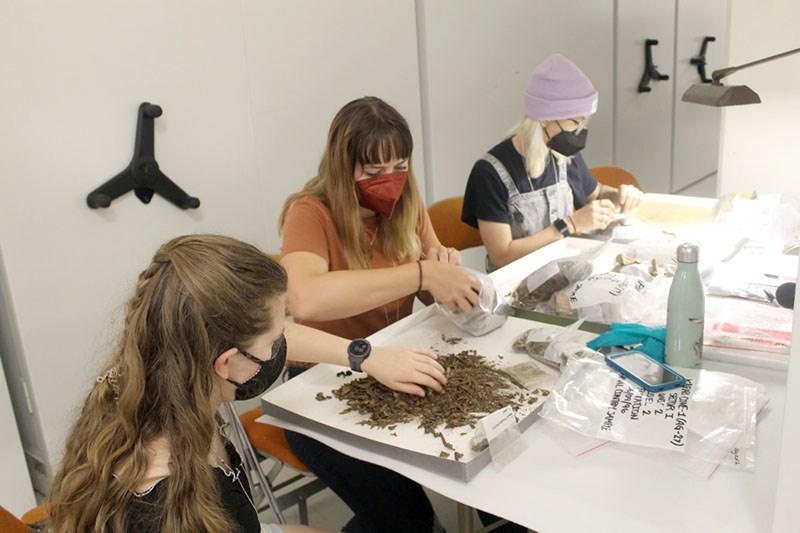
Figure 1: Taylor, Heather, and Jay (from left to right) sorting through bags of midden from archaeological site ATU-057 on Agattu Island at the Smithsonian Institution. The bags include information about the archaeological site, grid, unit, level, and date.
June’s blog introduced our change in summer fieldwork plans and our June research in Unalaska. This month we want to introduce our field crew and tell you more about our overall summer field work experience. The 2022 Aleutian Mercury Dynamics field team included five students with different backgrounds and two co-PIs from the Ancient Mercury project. This multidisciplinary group provided everyone involved in field work this summer with the opportunity to learn from unique perspectives and to appreciate the value of collaborative research.
After our initial change in plans, our new summer plan was working in Unalaska, Fairbanks, and Washington D.C.. While in Unalaska, we visited the Museum of the Aleutians (MOTA) and collected Steller sea lion, northern fur seal, and Pacific cod bones from a previously excavated archaeological collection. In Fairbanks, we took the bones we collected from MOTA and started prepping them for collagen extraction. Collagen extraction is the first step in getting stable isotope data from the bones. In Washington D.C., we visited the Smithsonian Institution to sort through another archaeological collection to determine if any bones would be useful for our project.
Let’s hear what our dynamic research team had to say about their 2022 summer field experience.
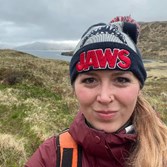 Heather Lackos is a recent graduate with a master’s degree in anthropology from the University at Buffalo. She is interested in public outreach and engagement, cultural resource management and law, citizen science programming, and employing a community-based approach to archaeological research. Heather was interested in this project to gain field experience working in Alaska on an academic research project. Most of her current field work experience is working in New York state on cultural resource management projects. She knew that this opportunity would broaden her horizons. Despite our change in plans she was still eager to be a part of this project. She was ready to expand her skills and experience working in a lab and museum setting.
Heather Lackos is a recent graduate with a master’s degree in anthropology from the University at Buffalo. She is interested in public outreach and engagement, cultural resource management and law, citizen science programming, and employing a community-based approach to archaeological research. Heather was interested in this project to gain field experience working in Alaska on an academic research project. Most of her current field work experience is working in New York state on cultural resource management projects. She knew that this opportunity would broaden her horizons. Despite our change in plans she was still eager to be a part of this project. She was ready to expand her skills and experience working in a lab and museum setting.
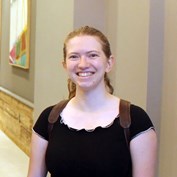 Taylor Vollman is an anthropology master’s student at the University of Victoria in British Columbia focusing on zooarchaeology. She grew up in rural Alaska and completed her undergrad at UAF. At UAF, she worked at the University of Alaska Museum of the North (UAMN). She had been looking for summer work in Alaska when she heard about this project through her former boss at UAMN. She was first interested in gaining more coastal excavation experience and traveling to such a remote area of Alaska. As the project evolved she was happy to spend time learning to identify marine mammal and cod bones.
Taylor Vollman is an anthropology master’s student at the University of Victoria in British Columbia focusing on zooarchaeology. She grew up in rural Alaska and completed her undergrad at UAF. At UAF, she worked at the University of Alaska Museum of the North (UAMN). She had been looking for summer work in Alaska when she heard about this project through her former boss at UAMN. She was first interested in gaining more coastal excavation experience and traveling to such a remote area of Alaska. As the project evolved she was happy to spend time learning to identify marine mammal and cod bones.
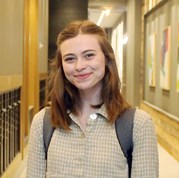 Miranda LaZar is a Ph.D. student in the School of Anthropology at the University of Arizona. Her research interests are centered around the ecological and cultural relationships between humans and animals, particularly birds, in the past and present. To study this, she utilizes zooarchaeology, stable isotope geochemistry, and ethnohistory methodological approaches. Her current PhD research examines long-term changes in seabirds and human interactions on Sanak Island, AK. She was happy to have the chance to venture out to the Aleutians to continue her field work in Alaska. Even with the change in plans she still got valuable experience working with museum collections this summer.
Miranda LaZar is a Ph.D. student in the School of Anthropology at the University of Arizona. Her research interests are centered around the ecological and cultural relationships between humans and animals, particularly birds, in the past and present. To study this, she utilizes zooarchaeology, stable isotope geochemistry, and ethnohistory methodological approaches. Her current PhD research examines long-term changes in seabirds and human interactions on Sanak Island, AK. She was happy to have the chance to venture out to the Aleutians to continue her field work in Alaska. Even with the change in plans she still got valuable experience working with museum collections this summer.
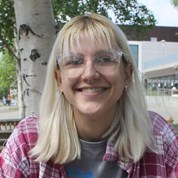 Jay Carreira graduated from the University at Buffalo last spring with a bachelor of arts in linguistics and spanish. This fall she started as a first-year Ph.D. student in the University of Georgia’s Department of Linguistics. While there, she is hoping to focus on the synthesis of endangered and underdocumented Indigenous languages and sociolinguistics. She hopes to develop a better understanding of language as part of its sociocultural surroundings.
Jay Carreira graduated from the University at Buffalo last spring with a bachelor of arts in linguistics and spanish. This fall she started as a first-year Ph.D. student in the University of Georgia’s Department of Linguistics. While there, she is hoping to focus on the synthesis of endangered and underdocumented Indigenous languages and sociolinguistics. She hopes to develop a better understanding of language as part of its sociocultural surroundings.
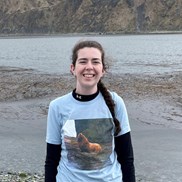 Mary Keenan is in her second year as a marine biology master’s student at the University of Alaska Fairbanks. She is studying the variability of total mercury concentration in Steller sea lion bone. More specifically, she is developing methods to analyze mercury concentrations in mammal bone for future studies. During the school year she works solely in the laboratory working on her project and the Aleutian Mercury Dynamics project. She was thrilled to get the opportunity to travel to the Aleutians for summer field work and explore museum collections.
Mary Keenan is in her second year as a marine biology master’s student at the University of Alaska Fairbanks. She is studying the variability of total mercury concentration in Steller sea lion bone. More specifically, she is developing methods to analyze mercury concentrations in mammal bone for future studies. During the school year she works solely in the laboratory working on her project and the Aleutian Mercury Dynamics project. She was thrilled to get the opportunity to travel to the Aleutians for summer field work and explore museum collections.
For Jay, this trip was the embodiment of the common advice to “step outside of your comfort zone”. She arrived bright and early to the airport the Sunday before Memorial Day and she knew she was going to embrace this piece of advice like never before. Being a linguist, Jay investigates human languages. Because of this at the beginning of the summer she knew very little about archaeology or Unangax̂. While working at MOTA Jay found herself in a completely unfamiliar place. She was in a museum with a bag of midden (which she later learned is an archeological term for domestic waste that included the fish bones we were looking for!) in front of her on a tray. As the trip continued she found herself learning what was, in a way, an entirely new language to her. What is a provenience? (Translation: The location of the sample within the grid of the archeology site.) What makes a bone “worked”? (Translation: Bones that were modified by humans.) She had learned about culture through the lens of language in the past, but the ability to see and work with the material culture that archeologists study was new. This way of understanding the present through the study of the past was an interesting change of perspective for her. She hopes to keep this perspective with her as she continues her own academic career.
Mary found herself in a similar position as a marine biologist, but was enthusiastic to learn about archaeology for the summer. Being a part of the Aleutian Mercury Dynamics project for the past year gave her an understanding of just how important collaborative work is. Gaining new perspectives and being able to analyze your own work through other people’s eyes creates well-rounded scientists. She was eager to learn about different fields of research through her other crewmembers this summer. The importance of collaboration and different perspectives is something that she will take away from this project and carry with her for the rest of her career. She especially enjoyed collecting and sorting bones at MOTA. Mary is usually in the lab at UAF all year running mercury analysis on bones that are already provided for her. Being able to see the museum collections where those bones come from and help sort/identify those bones was an incredible experience. In the Aleutian Islands she couldn’t help but feel a strong connection to her research. Her studies are centered on the Steller sea lion population in the Aleutian Islands. Physically being in the location that she has been studying and actually seeing Steller sea lions in the wild was an overwhelming and joyous experience for her.
Heather, more familiar with the archaeology “language”, learned specifically about both ancestral and contemporary Unangax̂ and Unangam culture visiting museums throughout Alaska. Heather’s previous knowledge in Unangam culture provided the other team members with context for a deeper understanding of Unangax̂. It is amazing how aspects of their culture could be seen just by looking at these bones that we were sorting through. She gained new skills in sea mammal and fish bone identification. She finds her most memorable experiences from this summer to be the ones where she was able to explore the geography of Alaska and bring home valuable connections with her crewmembers.
Miranda spent the past year working on stable isotope analysis in a laboratory setting so she was very excited to travel to MOTA and the Smithsonian. Faunal remains are what is left behind when an animal dies such as bones, shells, hair, and DNA. The combination of the faunal remains and other artifacts from the site allowed her to see a cultural/social context in the collections. This creates a picture of the past and can often be difficult to do with isolated samples in the lab. One of the most impactful experiences from this summer for Miranda was seeing a large male Steller sea lion scapula with grinding marks and red ochre stains in the Agattu collection at the Smithsonian (Figure 2). This artifact demonstrated the integral role, beyond just subsistence, that sea lions had (and continue to have) in Unangam daily lives.

Figure 2: A large male Steller sea lion scapula with grinding marks and red ochre stains in the Agattu collection at the Smithsonian (Photo credit: Heather Lackos).
The chance to work at the Smithsonian was very exciting for Taylor. She had gotten the chance to visit Washington DC with her family when she was in elementary school, but was excited at the chance to explore the city as an adult. For Taylor, riding the metro to the Smithsonian was a great way to ease into the day and working in the collections range at the Smithsonian facility in Maryland was a lot of fun! The animal bones from the Agattu collection had previously been sorted into fish, bird, and mammal. This sped up our process considerably. Some of the more memorable bones from the collection for her were ones that were deformed or had bone spurs (Figure 3). As humans we don’t always think about wild animals experiencing some of the same issues that we do. Just like us, animals break bones and get bone spurs too. The only difference is that they can’t go to a doctor’s office and get a bone reset. Seeing these helps to put the archaeological site into the perspective of a single lifetime.
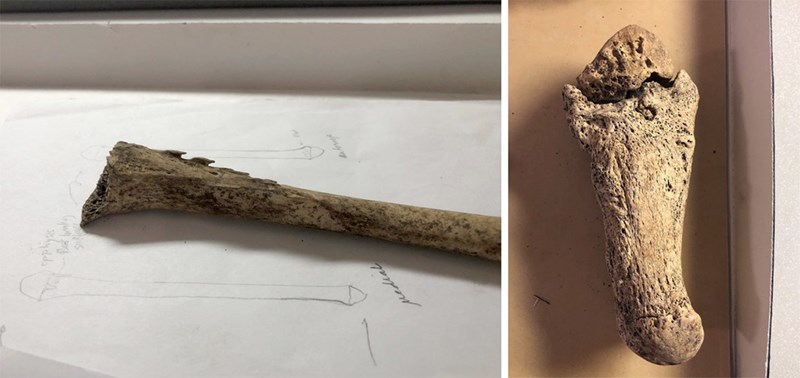
Figure 3: Some of the interesting bones found with bone spurs (left image) and a bone break (right image) found in the Agattu collection at the Smithsonian Institution (Photo credit: Taylor Vollman).
Working in a collagen extraction laboratory at the University of Alaska in Fairbanks was also a great opportunity for us all to experience. The experience was new for some of us and not for others. Mary and Miranda had been working in the lab all year. They took the lead in training the other team members in lab procedures including bone cutting, bone washing, and bone cataloging for the project. The other members enjoyed and benefitted from learning about new techniques in the lab. On the other hand, Mary and Miranda found it unexpectedly exciting to take a role in teaching about laboratory processes. It was exciting to experience something that they do all the time through a new light.
Having the opportunity to work on such a dynamic, multidisciplinary team allowed for Heather to gain insight into fields of study other than archaeology. Engaging with and observing all the different backgrounds and contributions from our field crew provided a holistic understanding of this project. This summer demonstrated how integral a multidisciplinary approach is, especially to a large project such as this one. Miranda learned so much from her crewmembers. They constantly pushed her to think about the archaeology and the research goals of the project in new ways. She gained incredible new friendships and professional colleagues that will continue past this summer. The best advice that we can give to students about this kind of research travel is to be open to new thoughts and experiences, especially when things don’t go the way they were originally planned. You never know what unique opportunities might come from a boat engine failure...we sure didn’t!
We appreciate the collaborative efforts of this project allowing researchers like us from many different backgrounds to be able to work together and learn from one another. It was an incredibly rewarding experience for everyone involved. Dr. Misarti and Dr. Funk were excellent role models. We learned so much from them about leading a team of researchers and being resilient and flexible during the research process. We would like to thank all of our collaborators at the Museum of the Aleutians and the Smithsonian Institution for their cooperation in our field work this summer.
Summer field work 2022: complete!